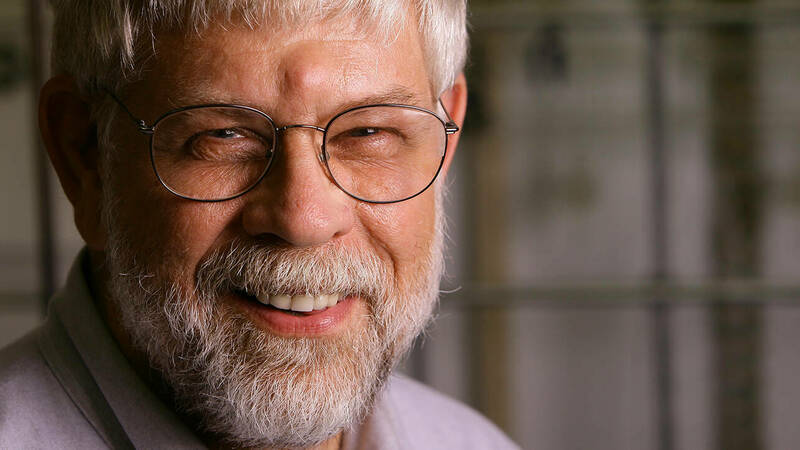
W. Robert Scheidt
Professor Emeritus
Prospective Graduate Students
Biography
Professor Scheidt obtained his Ph.D. in inorganic chemistry at the University of Michigan. After postdoctoral work at Cornell University, where he became interested in the chemistry and stereochemistry of metalloporphyrin complexes, he joined the faculty of the University of Notre Dame, where he was Warren Professor. He has been a visiting professor at the University of Washington, University of Paris(Orsay and Rene Decartes) and University Louis Pasteur (Strasbourg, France). In addition to more than 250 scientific publications, he has authored several book chapters. He is an elected fellow of the American Association for the Advancement of Science.
Research Interests
Overview
In all of our studies, we work on the preparation of new metalloporphyrin compounds, especially biologically important iron, that allow us to explore their properties using a number of techniques. These include methods that allow us to to investigate electronic structure (Elelctron Paramagnetic Resonance and Mössbauer spectroscopy, magnetic susceptibilities, and calculations), molecular structure (X-ray and neutron diffraction), and electronic and vibrational spectroscopy (especially NRVS, IR and Raman).
Nitric Oxide and Iron Porphyrinates. The recent realization that nitric oxide (NO) acts as a biological messenger with physiological functions in blood pressure control, neurotransmission, defense mechanisms (cytotoxicity) etc. has emphasized the interaction of NO with iron porphyrinates. This function emphasizes that NO must be considered as more than a toxic gas. The inorganic chemistry of this diatomic ligand (NO) in its interactions with iron porphyrinates is surprisingly different than that of the diatomics O2 and CO. The differences include structural distortions in the five-coordinate Fe(Porph)NO species that are intrinsic to the bonding between the iron porphyrinate and NO. We are currently exploring questions concerning the spin density distribution in iron systems with an unpaired electron qnd how different ligands trans to NO afect this. We are also exploring issues in the correllations between the strength of the Fe-N vs N-O bonds.
Nuclear Resonance Vibrational Spectroscopy (NRVS). NRVS is a recent synchrotron-based vibrational spectroscopy technique. Why another vibrational spectroscopy technique? NRVS is the ultimate site-selctive vibrational method for compounds with Mössbauer active nuclei. Prominent among these is 57Fe and Fe is arguably the most important biological metal. The method provides information for every mode in which there is iron motion. We are exploring this technique with both iron porphyrin and heme protein samples to examine all aspects of iron dynamics and to aid in understannding reactivity. We have been emphasizing species with diatomic ligands bound to iron which are the basis of understanding a number of issues in respiration. We are exploring ways of obtain ing complete vibration al assignments. We are using oriented crystal experiments to assist in these assignments.
Electronic Structure of Iron Porphyrinates.
Selected Publications
- Jentzen, W.; Shelnutt, J.A.; Scheidt, W.R. "Metalloporphines: Dimers and Trimers." Inorg. Chem. 2016, 55(12), 6294-6299.
- Scheidt, W.R.; Duval, H.F.; Oliver, A.G. "Ring-strain release in neutral and dicationic 7,8,17,18-tetrabromo-5,10,15,20-tetraphenyl-porphyrin: crystal structures of C44H26Br4N4 and C44H28Br4N42+•2ClO4-•3CH2Cl2" Acta Crystallogr. E 2016, 72, 824.
- Peng, Q.; Pavlik, J.W.; Silvernail, N.J.; Alp, E.E.; Hu, M.Y.; Zhao, J.Y.; Sage, J.T.; Scheidt, W.R. "3D Motions of Iron in Six-Coordinate {FeNo}(7) Hemes by Nuclear Resonance Vibration Spectroscopy" Chem. Eur. J. 2016, 22(18), 6323-6332.
- Serth-Guzzo, J.A.; Turowska-Tyrk, I.; Safo, M.K.; Walker, F.A.; Debrunner, P.G.; Scheidt, W.R. "Characterization of the mixed axial ligand complex (4-cyanopyridine)(imidazole)(tetramesitylporphinato)iron(III) perchlorate. Stabilization by synergic bonding" J. Porphyr. Phthalocya. 2016, 20(1-4), 254-264.
- Li, J.F.; Noll, B.C.; Schulz, C.E.; Scheidt, W.R. "Bis(cyano)Iron(III) Porphyrinates: What is the Ground State?" Inorg. Chem. 2015, 54(13), 6472-6485.
- Hu, C.J.; Schulz, C.E.; Scheidt, W.R. "All high-spin (S=2) iron(II) hemes are NOT alike" Dalton T. 2015, 44(42), 18301-18310.